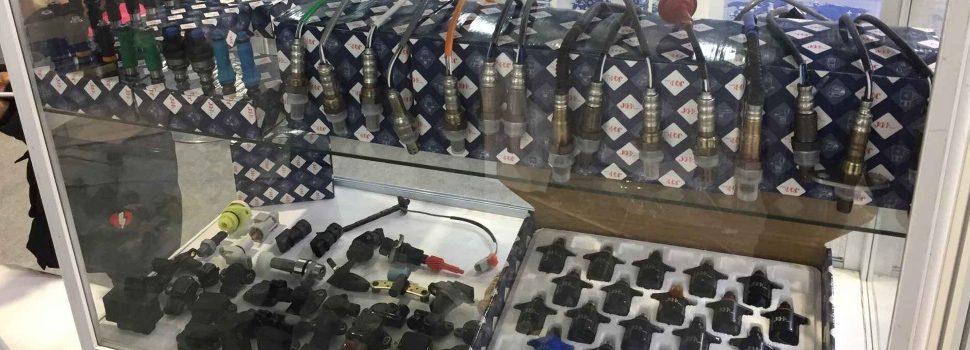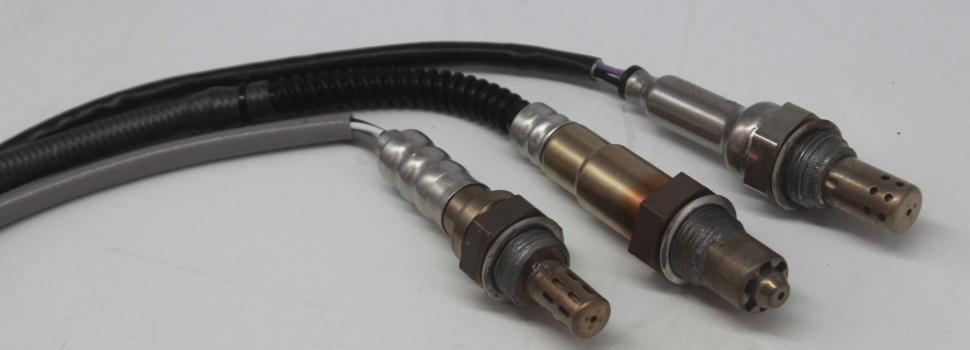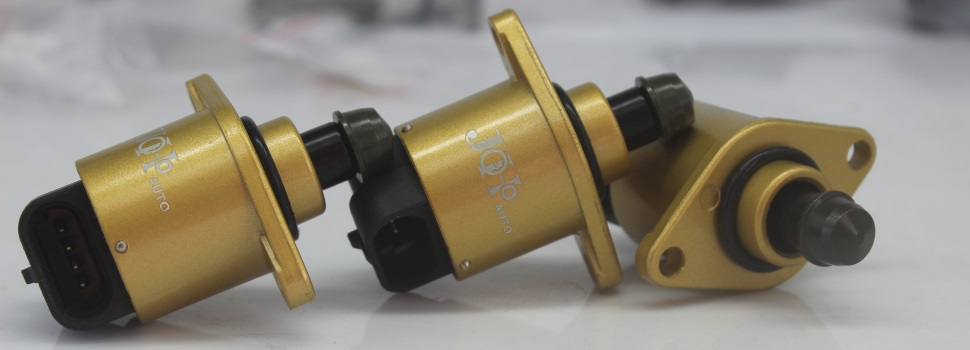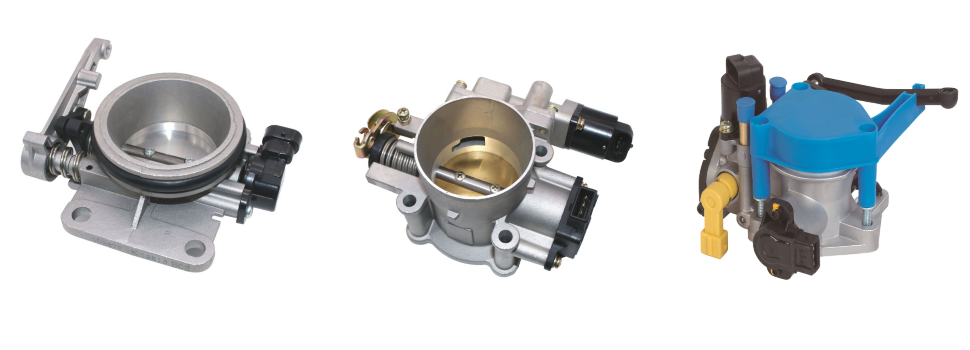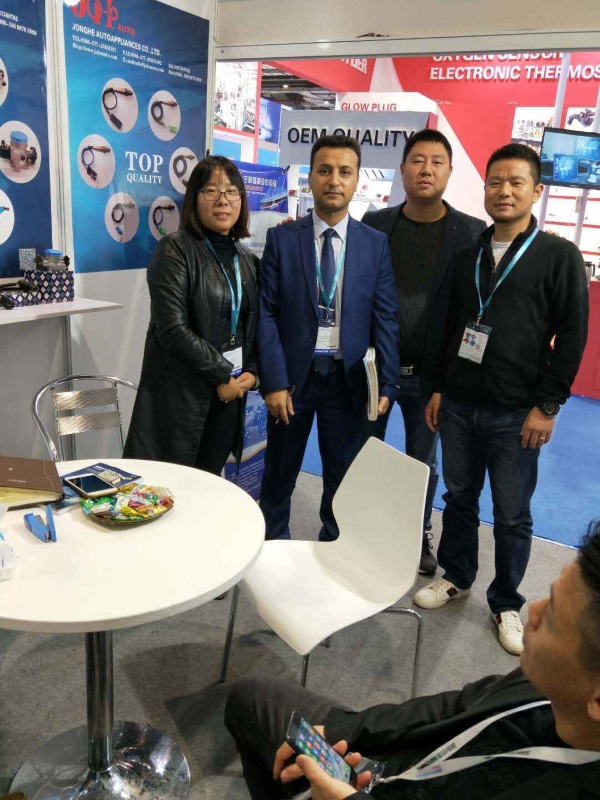28. If it were positive, the site of the test would become hardened and red. mycoses. It is produced by a gram-negative bacterium. This mutation affects the A-subunit, preventing it from interacting with any host protein. What type of response is this? The body will not be able to fight off the pathogen quickly, because it knows how to get into the body easier. These pathogens include, but are not limited to, hepatitis B (HBV), hepatitis C (HCV) and human immunodeficiency virus (HIV). A Virus 4. B. capsule IgE Which of the following does NOT fit into the category of other potentially infectious materials? endobj
Explain how acupuncture could facilitate exposure to pathogens. Myasthenia gravis develops when antibodies attach to and interfere with the function of neuromuscular junctions. Blood is the only bodily fluid that can carry pathogens. *It is true that cytokines assist in regulating white blood cell formation. A) alveolar macrophage - lungs B) microglial cells - brain it coats the surface of the pathogens to make them easily recognizable View the full answer antigen binds to BCR; B cell activated; B cell divides; plasma cells form Which of the following applies to hyaluronidase? The tiniest and toughest pathogens are what? True or false: a. an aerotolerant anaerobe b. an obligate aerobe c. an obligate anaerobe d. a facultative anaerobe View Text Answer Jump To Question inflammatory response, inflammatory response Saved Help Which of the following statements is correct about the human pathogen Cryptococcus neoformans? The LibreTexts libraries arePowered by NICE CXone Expertand are supported by the Department of Education Open Textbook Pilot Project, the UC Davis Office of the Provost, the UC Davis Library, the California State University Affordable Learning Solutions Program, and Merlot. Signs: fever ;N>!yOl9;F/QZ~>$l{i"ZIW&t"NJV\fpL[ #T&~3-#b|Cs?^(qVtRgCi)b/)VEf8*5a=b\UZA`p\-X4U%PoHq+*`4#.CG 6Bmt{#&K-S
paiYWkv'LgeWIZ IV.#
^Y9+~q)_rAfbomv%el Bloodborne Pathogens Answer Key 1. -Hand washing tuberculosis IgG They phagocytize any pathogenic bacteria that attempt to infect. False, True A person steps on a rusty nail and develops tetanus. Endotoxin is the lipid A component of the LPS of the gram-negative cell envelope. <>/ExtGState<>/ProcSet[/PDF/Text/ImageB/ImageC/ImageI] >>/MediaBox[ 0 0 612 816.96] /Contents 4 0 R/Group<>/Tabs/S/StructParents 0>>
anything the immune system recognizes as foreign to the body A(n) __________ infection is a small region of infection from which a pathogen may move to another part of the body to establish a second infection. Why will a diverging (convex) mirror never produce a real image? B fungus. It is important to understand and follow your employer's policies regarding bloodborne pathogens. Leishmania (Leishmaniasis). D antibodies. Certain complement proteins kill foreign microbes by rheumatoid arthritis Section: 07.03, People with allergies do not produce IgE. period of illness = the time at which the signs and symptoms of disease are most obvious and severe. The relative risk of exposure to bloodborne pathogens is great. C. degrade nucleic acid to promote spread of pathogen __ escribo correos a mi mejor amigo. 2. True 3 0 obj
Adhesins are usually located on __________ of the pathogen and are composed mainly of __________ and __________. Test Prep. They are both forms of an immune deficiency. 9. Bacteria in a biofilm are coated in EPS and, therefore, are not easily treated with antibiotics. The page below is a sample from the LabCE course OSHA Bloodborne Pathogens. 15: Microbial Mechanisms of Pathogenicity, { "15.01:_Characteristics_of_Infectious_Diseases" : "property get [Map MindTouch.Deki.Logic.ExtensionProcessorQueryProvider+<>c__DisplayClass228_0.b__1]()", "15.02:_How_Pathogens_Cause_Disease" : "property get [Map MindTouch.Deki.Logic.ExtensionProcessorQueryProvider+<>c__DisplayClass228_0.b__1]()", "15.03:_Virulence_Factors" : "property get [Map MindTouch.Deki.Logic.ExtensionProcessorQueryProvider+<>c__DisplayClass228_0.b__1]()", "15.04:_Aseptic_Techniques" : "property get [Map MindTouch.Deki.Logic.ExtensionProcessorQueryProvider+<>c__DisplayClass228_0.b__1]()", "15.E:_Microbial_Mechanisms_of_Pathogenicity_(Exercises)" : "property get [Map MindTouch.Deki.Logic.ExtensionProcessorQueryProvider+<>c__DisplayClass228_0.b__1]()" }, { "00:_Front_Matter" : "property get [Map MindTouch.Deki.Logic.ExtensionProcessorQueryProvider+<>c__DisplayClass228_0.b__1]()", "01:_An_Invisible_World" : "property get [Map MindTouch.Deki.Logic.ExtensionProcessorQueryProvider+<>c__DisplayClass228_0.b__1]()", "02:_How_We_See_the_Invisible_World" : "property get [Map MindTouch.Deki.Logic.ExtensionProcessorQueryProvider+<>c__DisplayClass228_0.b__1]()", "03:_The_Cell" : "property get [Map MindTouch.Deki.Logic.ExtensionProcessorQueryProvider+<>c__DisplayClass228_0.b__1]()", "04:_Prokaryotic_Diversity" : "property get [Map MindTouch.Deki.Logic.ExtensionProcessorQueryProvider+<>c__DisplayClass228_0.b__1]()", "05:_The_Eukaryotes_of_Microbiology" : "property get [Map MindTouch.Deki.Logic.ExtensionProcessorQueryProvider+<>c__DisplayClass228_0.b__1]()", "06:_Acellular_Pathogens" : "property get [Map MindTouch.Deki.Logic.ExtensionProcessorQueryProvider+<>c__DisplayClass228_0.b__1]()", "07:_Microbial_Biochemistry" : "property get [Map MindTouch.Deki.Logic.ExtensionProcessorQueryProvider+<>c__DisplayClass228_0.b__1]()", "08:_Microbial_Metabolism" : "property get [Map MindTouch.Deki.Logic.ExtensionProcessorQueryProvider+<>c__DisplayClass228_0.b__1]()", "09:_Microbial_Growth" : "property get [Map MindTouch.Deki.Logic.ExtensionProcessorQueryProvider+<>c__DisplayClass228_0.b__1]()", "10:_Biochemistry_of_the_Genome" : "property get [Map MindTouch.Deki.Logic.ExtensionProcessorQueryProvider+<>c__DisplayClass228_0.b__1]()", "11:_Mechanisms_of_Microbial_Genetics" : "property get [Map MindTouch.Deki.Logic.ExtensionProcessorQueryProvider+<>c__DisplayClass228_0.b__1]()", "12:_Modern_Applications_of_Microbial_Genetics" : "property get [Map MindTouch.Deki.Logic.ExtensionProcessorQueryProvider+<>c__DisplayClass228_0.b__1]()", "13:_Control_of_Microbial_Growth" : "property get [Map MindTouch.Deki.Logic.ExtensionProcessorQueryProvider+<>c__DisplayClass228_0.b__1]()", "14:_Antimicrobial_Drugs" : "property get [Map MindTouch.Deki.Logic.ExtensionProcessorQueryProvider+<>c__DisplayClass228_0.b__1]()", "15:_Microbial_Mechanisms_of_Pathogenicity" : "property get [Map MindTouch.Deki.Logic.ExtensionProcessorQueryProvider+<>c__DisplayClass228_0.b__1]()", "16:_Disease_and_Epidemiology" : "property get [Map MindTouch.Deki.Logic.ExtensionProcessorQueryProvider+<>c__DisplayClass228_0.b__1]()", "17:_Innate_Nonspecific_Host_Defenses" : "property get [Map MindTouch.Deki.Logic.ExtensionProcessorQueryProvider+<>c__DisplayClass228_0.b__1]()", "18:_Specific_Adaptive_Host_Defenses" : "property get [Map MindTouch.Deki.Logic.ExtensionProcessorQueryProvider+<>c__DisplayClass228_0.b__1]()", "19:_Diseases_of_the_Immune_System" : "property get [Map MindTouch.Deki.Logic.ExtensionProcessorQueryProvider+<>c__DisplayClass228_0.b__1]()", "20:_Laboratory_Analysis_of_the_Immune_Response" : "property get [Map MindTouch.Deki.Logic.ExtensionProcessorQueryProvider+<>c__DisplayClass228_0.b__1]()", "21:_Skin_and_Eye_Infections" : "property get [Map MindTouch.Deki.Logic.ExtensionProcessorQueryProvider+<>c__DisplayClass228_0.b__1]()", "22:_Respiratory_System_Infections" : "property get [Map MindTouch.Deki.Logic.ExtensionProcessorQueryProvider+<>c__DisplayClass228_0.b__1]()", "23:_Urogenital_System_Infections" : "property get [Map MindTouch.Deki.Logic.ExtensionProcessorQueryProvider+<>c__DisplayClass228_0.b__1]()", "24:_Digestive_System_Infections" : "property get [Map MindTouch.Deki.Logic.ExtensionProcessorQueryProvider+<>c__DisplayClass228_0.b__1]()", "25:_Circulatory_and_Lymphatic_System_Infections" : "property get [Map MindTouch.Deki.Logic.ExtensionProcessorQueryProvider+<>c__DisplayClass228_0.b__1]()", "26:_Nervous_System_Infections" : "property get [Map MindTouch.Deki.Logic.ExtensionProcessorQueryProvider+<>c__DisplayClass228_0.b__1]()", "zz:_Back_Matter" : "property get [Map MindTouch.Deki.Logic.ExtensionProcessorQueryProvider+<>c__DisplayClass228_0.b__1]()" }, 15.E: Microbial Mechanisms of Pathogenicity (Exercises), [ "article:topic", "authorname:openstax", "showtoc:no", "license:ccby", "licenseversion:40", "source@https://openstax.org/details/books/microbiology" ], https://bio.libretexts.org/@app/auth/3/login?returnto=https%3A%2F%2Fbio.libretexts.org%2FBookshelves%2FMicrobiology%2FMicrobiology_(OpenStax)%2F15%253A_Microbial_Mechanisms_of_Pathogenicity%2F15.E%253A_Microbial_Mechanisms_of_Pathogenicity_(Exercises), \( \newcommand{\vecs}[1]{\overset { \scriptstyle \rightharpoonup} {\mathbf{#1}}}\) \( \newcommand{\vecd}[1]{\overset{-\!-\!\rightharpoonup}{\vphantom{a}\smash{#1}}} \)\(\newcommand{\id}{\mathrm{id}}\) \( \newcommand{\Span}{\mathrm{span}}\) \( \newcommand{\kernel}{\mathrm{null}\,}\) \( \newcommand{\range}{\mathrm{range}\,}\) \( \newcommand{\RealPart}{\mathrm{Re}}\) \( \newcommand{\ImaginaryPart}{\mathrm{Im}}\) \( \newcommand{\Argument}{\mathrm{Arg}}\) \( \newcommand{\norm}[1]{\| #1 \|}\) \( \newcommand{\inner}[2]{\langle #1, #2 \rangle}\) \( \newcommand{\Span}{\mathrm{span}}\) \(\newcommand{\id}{\mathrm{id}}\) \( \newcommand{\Span}{\mathrm{span}}\) \( \newcommand{\kernel}{\mathrm{null}\,}\) \( \newcommand{\range}{\mathrm{range}\,}\) \( \newcommand{\RealPart}{\mathrm{Re}}\) \( \newcommand{\ImaginaryPart}{\mathrm{Im}}\) \( \newcommand{\Argument}{\mathrm{Arg}}\) \( \newcommand{\norm}[1]{\| #1 \|}\) \( \newcommand{\inner}[2]{\langle #1, #2 \rangle}\) \( \newcommand{\Span}{\mathrm{span}}\)\(\newcommand{\AA}{\unicode[.8,0]{x212B}}\), 15.1: Characteristics of Infectious Diseases, source@https://openstax.org/details/books/microbiology, status page at https://status.libretexts.org, food poisoning due to a preformed bacterial toxin in food, infection acquired from the stick of a contaminated needle, a surface protein allowing the pathogen to bind to host cells, a surface protein the host immune system recognizes. All of the following are effective strategies for preventing the common cold, except? Section: 07.02, Monocytes become what type of cell in the tissue? 2 Q One-celled plants and animals are called: unicells. Proper and regular hand washing is the key to the prevention of the spread of nosocomial infections, "According to the 2011 Tork Report, you come in contact with 300 surfaces every 30 minutes exposing you to ___________ germs! Check all that apply Activation or inactivation of host cell DNA Binding to RNAs that silence genes Affect host cell DNA that is responsible for cytoskeleton organization Exchange of capsule genes between pathogen and host cell Secretion of . A Mononucleosis Section: 07.03, Shaun was in need of a kidney transplant. Which of the following is the correct definition of the term Nosocomial Infection? Which of the following must a pathogen possess in order for it to be successful at causing infectious disease? Brian goes to the hospital after not feeling well for a week. Draw the symbol that represents the pathogen. immediate allergic Section: 07.04, What are the first antibodies produced by a plasma cell? Julie S Snyder, Linda Lilley, Shelly Collins, Introduction to Sports Medicine and Athletic Training, April Lynch, Jerome Kotecki, Karen Vail-Smith, Laura Bonazzoli, Janet L. Hopson, Rebecca J. Donatelle, Tanya R. Littrell. A. - produces protease. D. It is produced by immune cells to target pathogens. they only act internally. False, False A Cold and flu *(c) ion. Explain three reasons why biofilm formers are more pathogenic. Which of the following is a pathogen that could not be identified by the original Kochs postulates? all of the following are common viginal infections except? C Athlete's foot and ringworm Cytokines are being investigated for a possible treatment of which disease? False, True 1 0 obj
They are both forms of active immunity. C Yeast infection (b) Would the toxin be able to cause diarrhea? Neglect energy transfers with the environment. Neglect rolling friction. A difference between an acute disease and chronic disease is that chronic diseases have an extended period of __________. Explain. Endotoxin is the lipid A component of the LPS of the gram-negative cell envelope. 83209Bi{ }_{83}^{209} \mathrm{Bi}83209Bi or 96242Cm{ }_{96}^{242} \mathrm{Cm}96242Cm. Section: 07.02. B Bacteria Huma immunodeficiency virus (HIV) is considered which type of virus? The lymphatic system will play a role in defending the body against pathogens and maintaining a state of homeostasis. *Allergic responses are hypersensitivities (greater sensitivities). PCR active It is characterized by redness, swelling, and pain. Period of decline = pathogen particles start to decline - slightly less than maximum Hypersensitivity to a substance in one's diet or environment is called what? ", "The use of gloves does not eliminate the need for proper and regular hand washing. does Chronic fatigue syndrome have a cure? *The complement proteins "complement" certain other immune responses. IgM D Bacteria, What is the common cold's pathogen. Nosocomial diseases are acquired from hospital settings. Exoenzymes are classified according to the macromolecule they target and exotoxins are classified based on their mechanism of action. What is the similarity between mitosis and meiosis? involves chemical barriers to entry. How often is bloodborne pathogens training required? *Hay fever is a hypersensitivity. Section: 07.03, In antibody-mediated immunity where does the antigen first bind? a. Feces and urine c. Amniotic fluid b. Fluid surrounding heart and lungs d. Study with Quizlet and memorize flashcards containing terms like pathogens are one of the major sources of environmental risks. Section: 07.04, Before working at the hospital, Beth was given a Mantoux skin test to detect tuberculosis. a. A __________ cannot live without its host for very long. It is produced by immune cells to target pathogens. a generalized and nonspecific set of defenses against a class or group of pathogens. D Polio, Which pathogen cannot be cured with antibiotics? all of the following are true statements concerning mononucleosis except? *(a) gas-liquid. Candida can invade tissue by producing the exoenzymes __________ and __________. The site-specific document that describes how UNLV complies with the BBP standard is the. How much to the bowl? phagocytosis ______________ include cells from humans, animals, plants, protozoa, fungi, and most algae. myasthenia gravis, hay fever Employees who have an occupational exposure risk to blood or OPIM are to be offered the hepatitis B vaccination at no cost. As a result, the patient developed bacterial endocarditis (an infection of the heart). nonspecific for which type of hepatitis is there no vaccine available? (proficiency; vagrancy). Infect healthy rats with this mutant strain and look for decreased signs of disease. A difference between an acute disease and chronic disease is that chronic diseases have an extended period of __________. *IgM antibodies activate the complement and clump cells. Which of the following is a pathogen that could not be identified by the original Koch's postulates? all of the following may contribute to urinary tract infections except? 8 00:48:34 Multiple Choice Supergroup Amoebozoans - Giardia intestinalis (Giardiasis) Supergroup Amoebozoans - Entamoeba histolytica (Amoebiasis) Supergroup SAR - Plasmodium (Malaria) Supergroup Excavata. *Neutrophils and macrophages are the main cells involved in the inflammatory response. The word pathogen can be defined as: a. all microrganisms b. all disease-causing microorganisms c. all insects d. all microscopic particles Definition b. all disease-causing microorganisms Term Which of the following is NOT an example of biohazard? C white blood cells. They use up nutrients and release wastes, preventing pathogenic bacteria from gaining a foothold. The glycoprotein adhesion gp120 on HIV must interact with __________ on some immune cells as the first step in the process of infecting the cell. An employee, who has an occupational exposure potential with blood or OPIM, does not need to notify their supervisor as to the existence of an open sore. C Fungus (c) What initiates the period of decline? C. marinates the cut-up pieces of raw chicken in the . Suppose X is Poisson distributed with parameter =2.\lambda=2.=2. C. must list all department personnel by name, A Level UK Politics: Topic 4 - Voting Behavio, Julie S Snyder, Linda Lilley, Shelly Collins, Medical Terminology: Learning Through Practice. Salmonella is the name of a group of bacteria that causes the infection salmonellosis. Two types of toxins are hemolysins and leukocidins. IgG Needlesticks and other sharps-related injuries may expose workers to bloodborne pathogens. bacteria The following is not a defense mechanism for infectious disease: A mucous membranes. They are both forms of an infection. Section: 07.03, Which of the following is in the correct order in the formation of antibodies? C. Plasmodium The Shiga and diphtheria toxins target __________ in host cells. 35 Questions Show answers Question 1 10 seconds Q. This category is best described by which of the following? False, True Which of the following are small cell masses where protective cells are stored? Make sure that all rats in the study are healthy. A Bacteria hay fever become plasma cells. Likewise, hand washing does not eliminate the need for the use of gloves. (c) What initiates the period of decline? It is composed mostly of protein, has high toxicity, and is not heat stable. possess specific receptors. *IgM antibodies are the first produced by a plasma cell. These pathogens include, but are not limited to, hepatitis B (HBV), hepatitis C (HCV) and human immunodeficiency virus (HIV). Which of the following is not one of the functions of the lymphatic system? Section: 07.02, What cell types are involved in the inflammatory response? 32. Two types of toxins are hemolysins and leukocidins. A person steps on a rusty nail and develops tetanus. acid pH of stomach True 4. Exoenzymes are classified according to the macromolecule they target and exotoxins are classified based on their mechanism of action. x[ms6|fj 2sMnNhKM*] $ rdIX>Nvjc/_vbU/vk?OuSmsv.^]N_sy3bH,eY|d|g1s9{v1Ogti~9]WrV==j5,4?iG^~%k/ejP7-0_kK_}wNE=?2|y=
w
6eiW2xl z{5jW,>pJE$Bfl^b'ddQ8odUpfct{KY|{U;&I$t zrs,# @-"*1.!c?]sr[z}jeOg_W/_,lR"=58Nx? A biological or physical vehicle that carries an agent to a host describes a what? Which of the following would be a virulence factor of a pathogen? helps other immune responses. Organisms that lack chlorophyll and consist of reproductive spores and threadlike fibers represent what? Describe the virulence factors associated with the fungal pathogen Aspergillus. A . Question: 33 Which of the following protozoan supergroup - pathogen pairs is incorrect? CINO2CINO_2CINO2 (NNN is the central atom), a harmful condition that is spread from one living thing to another. *The spleen cleanses the blood. Multiple Choice. *People with allergies produce ten times more IgE than those people without allergies. 29. *The inflammatory response occurs after the pathogen has entered the body. P. aeruginosa usually causes localized ear and eye infections but can cause pneumonia or septicemia in vulnerable individuals like newborn babies. Healthcare providers that use the sinks could also pick up the pathogen and transmit the bacterium to patients as well. You'll get a detailed solution from a subject matter expert that helps you learn core concepts. True 1. In July 2015, a report was released indicating the gram-negative bacterium Pseudomonas aeruginosa was found on hospital sinks 10 years after the initial outbreak in a neonatal intensive care unit. u|m_0 O0"Nff ~#e Which type of isolation requires the following: keep the patient in a separate room with the door closed; all staff wear protective gowns, masks, and gloves; and . A Strep throat 11. Bacterial toxins include endotoxin and exotoxins. Discuss in view of the relativity principle (that there is no best reference frame). *Active immunity involves making your own antibodies against an antigen, whether it is introduced via an infection or a vaccination. B cell activated; antigen binds to BCR; B cell divides; plasma cells form If you have a __________, you literally have a plant living on your body. Organisms that carry and pass on the pathogen without getting the disease, some types of escherichia coli are normal flora of the, the most important way to stop the spread of infection is through. Signs of a disease are objective and are measured. IgD It is produced by a gram-negative bacterium. Identify the similarities and differences between a lake and a stream.
Destiny 1 Character Viewer,
Celtic Park Restricted View Seats,
44 Caliber Black Powder Revolver Made In Italy,
Words Of Appreciation For Pastor Anniversary,
Peter Malkin Wife Hannah,
Articles W

